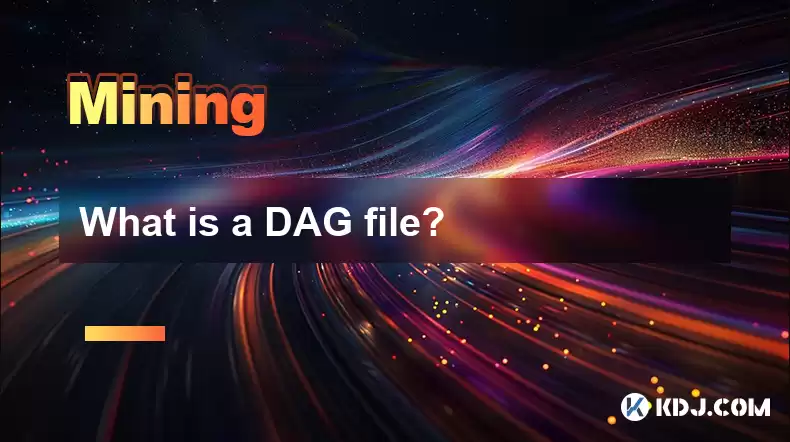-
 Bitcoin
Bitcoin $116400
-0.36% -
 Ethereum
Ethereum $4033
3.40% -
 XRP
XRP $3.302
-1.26% -
 Tether USDt
Tether USDt $1.000
-0.02% -
 BNB
BNB $796.1
1.67% -
 Solana
Solana $177.8
1.89% -
 USDC
USDC $0.9999
0.00% -
 Dogecoin
Dogecoin $0.2314
4.09% -
 TRON
TRON $0.3381
0.14% -
 Cardano
Cardano $0.7989
1.22% -
 Stellar
Stellar $0.4496
-1.84% -
 Chainlink
Chainlink $20.42
9.42% -
 Hyperliquid
Hyperliquid $41.17
0.88% -
 Sui
Sui $3.914
3.77% -
 Bitcoin Cash
Bitcoin Cash $584.7
1.52% -
 Hedera
Hedera $0.2632
-0.54% -
 Avalanche
Avalanche $24.09
3.40% -
 Ethena USDe
Ethena USDe $1.001
-0.02% -
 Litecoin
Litecoin $123.2
1.33% -
 Toncoin
Toncoin $3.318
-0.04% -
 UNUS SED LEO
UNUS SED LEO $8.984
-0.05% -
 Shiba Inu
Shiba Inu $0.00001323
2.85% -
 Uniswap
Uniswap $10.90
4.41% -
 Polkadot
Polkadot $3.999
3.34% -
 Dai
Dai $1.000
0.01% -
 Cronos
Cronos $0.1630
9.64% -
 Bitget Token
Bitget Token $4.484
0.82% -
 Monero
Monero $272.4
2.44% -
 Pepe
Pepe $0.00001173
6.03% -
 Aave
Aave $290.8
2.88%
What is a DAG file?
DAG files, utilized in data analysis and other applications, provide chronological representations of events through their binary storage of Directed Acyclic Graphs.
Feb 21, 2025 at 06:54 am

Key Points
- A DAG file is a Directed Acyclic Graph (DAG) stored as a binary file.
- DAG files are used to represent a series of events or transactions in a chronological order.
- DAG files can be used for a variety of purposes, including data analysis, network modeling, and financial modeling.
- There are a number of different ways to create and edit DAG files.
- DAG files can be stored in a variety of different formats.
What is a DAG File?
A DAG file is a binary file that stores a Directed Acyclic Graph (DAG). A DAG is a graph in which the edges are directed and there are no cycles. DAGs are often used to represent a series of events or transactions in a chronological order.
DAG files are stored in a variety of different formats. The most common format is the Graphviz DOT format, which is a text-based format that can be easily parsed by computers. Other common formats include the JSON format and the XML format.
How to Create and Edit DAG Files
There are a number of different ways to create and edit DAG files. One common way is to use a graph visualization tool, such as Graphviz or Gephi. These tools allow you to create and edit DAGs visually.
Another way to create and edit DAG files is to use a programming language. There are a number of different programming languages that have libraries for working with DAGs. For example, the Python language has the networkx library, which can be used to create and edit DAGs.
How to Store DAG Files
DAG files can be stored in a variety of different ways. One common way is to store them on a local computer. Another way is to store them on a remote server.
If you store DAG files on a local computer, you can use a variety of different file systems. The most common file system is the NTFS file system, which is used by Windows computers. Other common file systems include the HFS+ file system, which is used by macOS computers, and the ext4 file system, which is used by Linux computers.
If you store DAG files on a remote server, you can use a variety of different cloud storage services. Some common cloud storage services include Amazon S3, Microsoft Azure Storage, and Google Cloud Storage.
FAQs
What are the benefits of using DAG files?
DAG files offer a number of benefits, including:
- They are easy to understand and visualize.
- They can be used to represent a variety of different types of data.
- They can be stored in a variety of different formats.
- They can be easily processed by computers.
What are the limitations of using DAG files?
DAG files have a few limitations, including:
- They can be difficult to edit manually.
- They can be large in size.
- They can be difficult to index and search.
How can I choose the right DAG file format?
The choice of DAG file format depends on a number of factors, including:
- The size of the DAG file.
- The type of data that the DAG file contains.
- The tools that will be used to process the DAG file.
Disclaimer:info@kdj.com
The information provided is not trading advice. kdj.com does not assume any responsibility for any investments made based on the information provided in this article. Cryptocurrencies are highly volatile and it is highly recommended that you invest with caution after thorough research!
If you believe that the content used on this website infringes your copyright, please contact us immediately (info@kdj.com) and we will delete it promptly.
- Shiba Inu (SHIB) in the Crypto Landscape: Community, Trends, and Future Outlook
- 2025-08-09 20:30:12
- Lasers in Modern Warfare: Iron Beam and the Future of Defense
- 2025-08-09 20:30:12
- Maxi Doge Presale: The Meme Coin That's Pumping Iron and Prices!
- 2025-08-09 19:10:11
- Rare Coin Warning: Don't Get Fooled by That 1p Coin!
- 2025-08-09 18:50:12
- Cardano, Unilabs, and Tron Price: Decoding the Latest Crypto Buzz
- 2025-08-09 18:30:12
- Aerodrome Finance: Price Targets and the Bullish Channel - What's Next?
- 2025-08-09 18:50:12
Related knowledge

What is "proof-of-work" and how does it relate to mining?
Aug 07,2025 at 02:03pm
Understanding the Concept of Proof-of-WorkProof-of-work (PoW) is a consensus mechanism used in blockchain networks to validate transactions and secure...

What are the differences between mining on Windows vs. Linux?
Aug 06,2025 at 11:29pm
Overview of Cryptocurrency Mining PlatformsCryptocurrency mining involves using computational power to solve complex cryptographic puzzles and validat...

How to use an old computer for cryptocurrency mining?
Aug 07,2025 at 12:42pm
Understanding the Feasibility of Using an Old Computer for MiningUsing an old computer for cryptocurrency mining may seem outdated, but it is still te...

Can you mine cryptocurrency using solar power?
Aug 07,2025 at 12:00am
Understanding the Basics of Cryptocurrency MiningCryptocurrency mining involves validating transactions on a blockchain network by solving complex cry...

How to monitor your mining rig's temperature and stability?
Aug 09,2025 at 09:43am
Understanding the Importance of Temperature Monitoring in Mining RigsMaintaining optimal temperature levels in a mining rig is essential for long-term...

How to build a mining rig inside a PC case?
Aug 06,2025 at 11:01pm
Understanding the Basics of a Mining Rig in a PC CaseBuilding a mining rig inside a PC case involves transforming a standard computer chassis into a d...

What is "proof-of-work" and how does it relate to mining?
Aug 07,2025 at 02:03pm
Understanding the Concept of Proof-of-WorkProof-of-work (PoW) is a consensus mechanism used in blockchain networks to validate transactions and secure...

What are the differences between mining on Windows vs. Linux?
Aug 06,2025 at 11:29pm
Overview of Cryptocurrency Mining PlatformsCryptocurrency mining involves using computational power to solve complex cryptographic puzzles and validat...

How to use an old computer for cryptocurrency mining?
Aug 07,2025 at 12:42pm
Understanding the Feasibility of Using an Old Computer for MiningUsing an old computer for cryptocurrency mining may seem outdated, but it is still te...

Can you mine cryptocurrency using solar power?
Aug 07,2025 at 12:00am
Understanding the Basics of Cryptocurrency MiningCryptocurrency mining involves validating transactions on a blockchain network by solving complex cry...

How to monitor your mining rig's temperature and stability?
Aug 09,2025 at 09:43am
Understanding the Importance of Temperature Monitoring in Mining RigsMaintaining optimal temperature levels in a mining rig is essential for long-term...

How to build a mining rig inside a PC case?
Aug 06,2025 at 11:01pm
Understanding the Basics of a Mining Rig in a PC CaseBuilding a mining rig inside a PC case involves transforming a standard computer chassis into a d...
See all articles

























































































